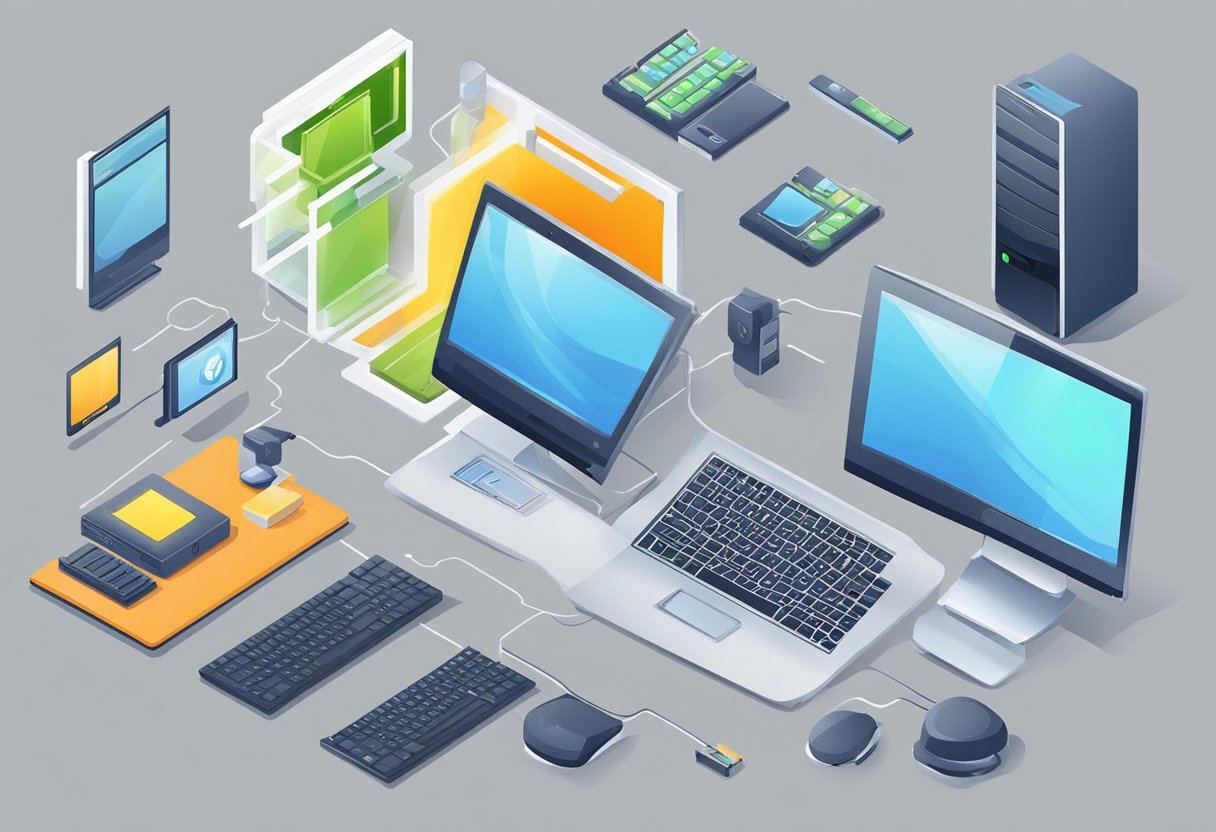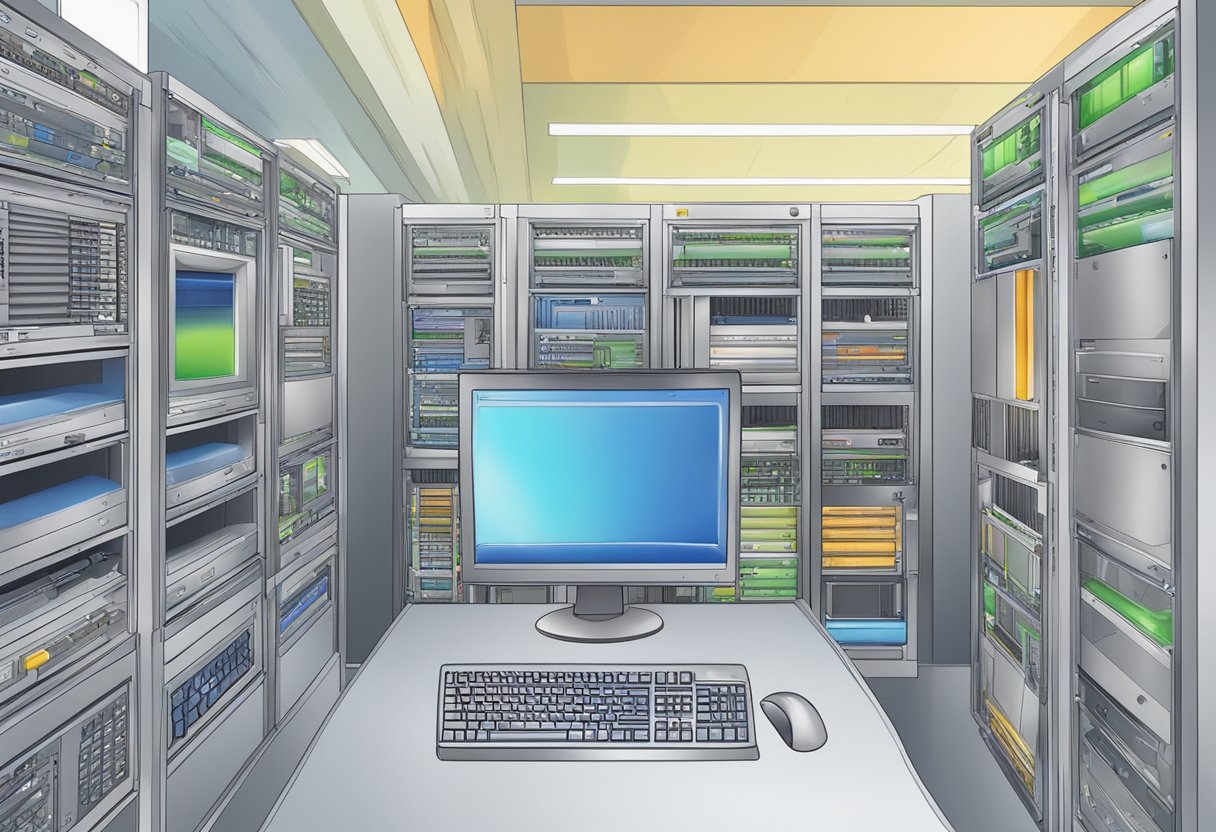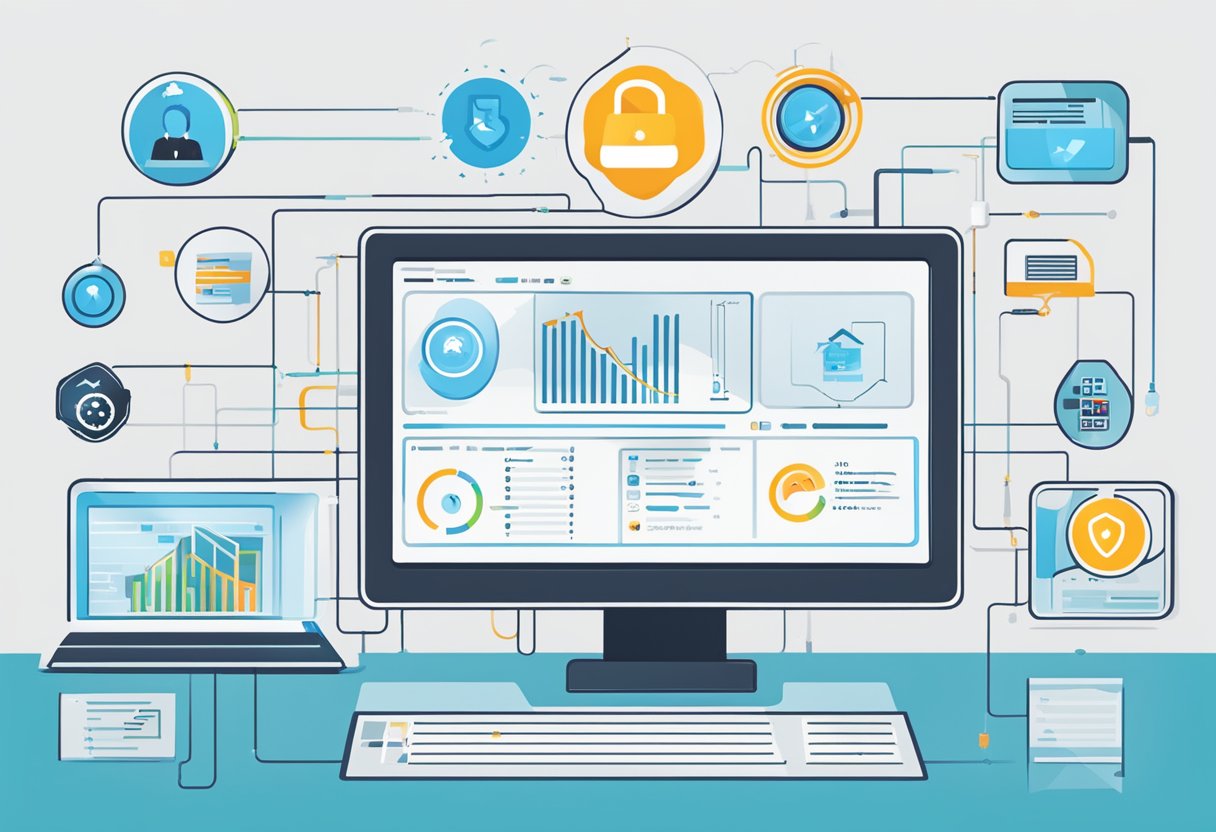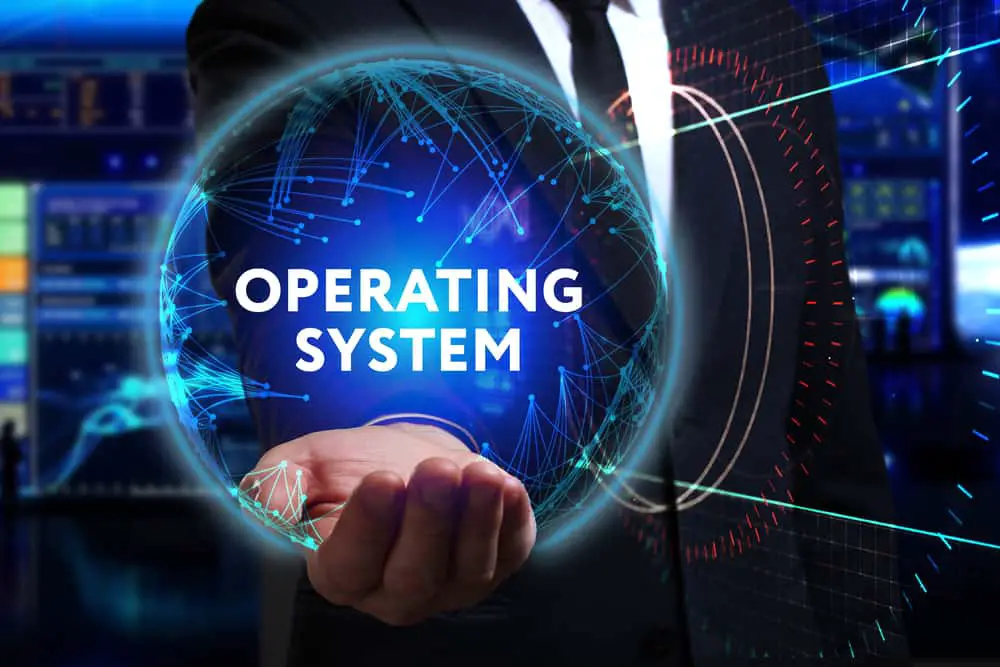A computer operating system (OS) serves as the backbone of any computing device by facilitating the communication between software and hardware components.
It is a collection of system programs that manage the computer’s resources, enabling users and software applications to interact with hardware to accomplish various tasks. The OS ensures that computer processes run efficiently and users can easily control the device.
The primary functions of an operating system include process management, memory management, file system management, and hardware device management.
Process management involves scheduling and allocating resources for optimal performance, while memory management deals with the allocation and deallocation of memory to applications.
File system management organizes and maintains data storage, and hardware device management ensures that peripherals such as printers, storage devices, and displays work harmoniously with the computer.

Throughout its evolution, operating systems have undergone significant changes, adapting to the rapid advances in computer technology.
Today, a wide range of operating systems exist, from UNIX and Windows to open-source alternatives like Linux, each with unique features and capabilities.
Regardless of the variations, the primary purpose of an OS remains the same – to provide a user-friendly interface and ensure a seamless computing experience.
Operating System Fundamentals
Types of Operating Systems
There are several types of operating systems, with the most common ones being Windows, macOS, and Linux. Windows 10, developed by Microsoft, is the most widely used operating system for personal computers.
Apple’s macOS is exclusive to their devices, such as MacBooks and iMacs. Linux is an open-source operating system that comes in various distributions, such as Ubuntu and Fedora.
Each of these operating systems has its own strengths and weaknesses, based on factors like user interface, compatibility, and system requirements.
Core Functions of an Operating System
An operating system (OS) serves as a bridge between the user and the computer’s hardware. It has several core functions:
-
Process management: The OS oversees the execution of programs (processes) on the system, allocating resources, and managing priorities.
-
Memory management: The OS handles the allocation and deallocation of memory to processes. It keeps track of which memory areas are in use and which are available.
-
File system management: The OS organizes and manages the storage and retrieval of data on storage devices like hard drives, SSDs, and external storage mediums.
-
Device management: The OS manages communication and control of hardware devices, such as keyboards, mice, and printers, through device drivers.
-
Security: The OS plays a crucial role in ensuring system security by defining and enforcing access levels, authentication, and permissions.
User Interface and User Experience
Operating systems provide a user interface (UI) to enable users to interact with the computer. There are two types of UIs:
-
Graphical User Interface (GUI): Most modern operating systems, such as Windows 10, macOS, and Linux distributions, provide a graphical interface that allows users to interact with the system using windows, icons, menus, and pointers.
-
Command-Line Interface (CLI): Some operating systems like Linux and macOS also offer a command-line interface, which lets users interact with the system by typing text-based commands. Though not as visually appealing as a GUI, a CLI can be more powerful and efficient for certain tasks.
The user experience (UX) is another crucial aspect of an operating system. It encompasses the overall design and functionality of the OS.
From easy navigation and intuitive features to smooth performance and pleasing aesthetics, a well-designed user experience enhances productivity and user satisfaction.
Managing System Resources
A computer operating system (OS) is responsible for managing system resources to ensure the efficient functioning of the system. Key resources managed by an OS include memory, processes and tasks, and input/output systems.
Memory Management
The operating system is responsible for managing the computer’s memory. This involves allocating memory to processes when needed and deallocating memory when processes no longer require it.
Memory management is crucial for the efficient functioning of the system as improper management could lead to issues such as fragmentation or memory leaks. Two core aspects of memory management are virtual memory and physical memory.
-
Virtual memory allows the OS to manage memory space more effectively by using a portion of the system’s storage as an extension of the RAM. This enables the system to run larger applications than can fit in the available physical memory.
-
Physical memory refers to the actual RAM in the system. The OS manages the allocation and deallocation of physical memory to ensure that each process has enough memory to run properly.
Process and Task Management
An operating system is responsible for managing the CPU and coordinating the multiple processes and tasks running on a computer. It should ensure that processes are executed efficiently and that resources are allocated fairly. Essential responsibilities include:
- Scheduling: The OS must decide the order in which processes execute, giving priority to critical system processes and maintaining overall system performance.
- Inter-process communication: The operating system must facilitate communication between different processes and tasks, allowing them to share information and work together effectively.
- Synchronization: The OS ensures that concurrent processes do not conflict with one another, managing access to shared resources and preventing issues such as deadlocks.
- Management of resources: The operating system allocates resources, such as CPU time, memory, and storage, to each process or task based on the system’s overall needs.
Input/Output System Management
The operating system handles input/output (I/O) operations, managing communication between the system and external devices such as keyboards, mice, printers, or storage devices. Key aspects of I/O system management include:
-
Device drivers: These are software components that enable communication between the OS and hardware devices, allowing the system to interact with a wide range of peripherals. The OS is responsible for managing these drivers and ensuring that they function correctly.
-
Buffering: The OS uses buffers to temporarily store data from input devices or data to be sent to output devices. This helps control the flow of data, improving performance and minimizing the risk of data loss.
-
Caching: The operating system employs caching techniques to store frequently used data in a faster memory location, reducing the time it takes to access the data and improving overall system speed.
Operating Systems and Applications

Operating systems play a crucial role in managing computer hardware and providing an environment for applications to run.
Some popular examples of operating systems include Apple iOS and Android. In this section, we will explore the relationship between operating systems and applications, focusing on Installing and Running Applications and Multitasking and Application Performance.
Installing and Running Applications
Applications, also known as software or programs, are designed to perform specific tasks on a computer. When a user installs an application, the operating system helps manage the process and allocates memory and other resources to the application.
This allows applications to be installed and executed efficiently.
The process of installing an application involves the following steps:
- Download: The user downloads the application’s installation file from a distribution platform or a website.
- Installation: The installation file copies the necessary files and resources into the designated directories on the user’s computer.
- Configuration: The application’s settings and other preferences are set, and the application is registered with the operating system.
Once the installation is complete, the operating system ensures that the application runs smoothly by providing access to hardware resources like memory, storage, and input devices.
Multitasking and Application Performance
A key feature of modern operating systems is their ability to manage multiple applications simultaneously, allowing users to multitask.
This involves the operating system efficiently allocating software resources and managing the execution of multiple processes at once.
Applications can run concurrently, with the operating system ensuring that each application receives the resources it needs to function correctly.
To achieve efficient multitasking, operating systems use various techniques, such as:
- Process Scheduling: The operating system assigns priorities to each process and determines the order in which they should execute.
- Memory Management: The operating system manages the allocation and deallocation of memory to applications, ensuring that no two applications use the same memory location.
- Resource Sharing: Multiple applications may require access to the same resources, and the operating system must manage this access to prevent conflicts and ensure fair distribution.
Ultimately, the manner in which an operating system manages applications and multitasking significantly impacts a user’s experience.
A well-designed operating system can effectively balance resource allocation to maximize application performance and provide a seamless, responsive user experience.
Security and System Updates

Maintaining System Security
Ensuring the security of an operating system is a crucial aspect for both individual users and organizations. One of the primary ways that operating systems maintain security is through the use of firewalls and antivirus software.
These tools help protect the system from unauthorized access, malicious software (malware), and other potential threats.
Many popular operating systems, such as Microsoft Windows and macOS, come with built-in firewalls, which form a barrier between the computer and the internet, allowing only authorized data to pass through.
Additionally, regular system updates are essential in enhancing security features, fixing vulnerabilities, and ensuring that these protective measures operate efficiently.
Operating systems like Ubuntu and Linux Mint also prioritize system security by following the same security principles, such as providing built-in firewalls, routinely delivering security updates, and developing a strong community base that contributes to identifying and fixing potential risks.
Operating System Updates and Upgrades
Operating system updates and upgrades are essential in keeping a computer running smoothly, securely, and efficiently.
Updates typically consist of minor patches, bug fixes, and security improvements, while upgrades are major releases that introduce new features or significant enhancements in the system.
For example, Microsoft Windows periodically releases security patches and feature updates to ensure that its users receive up-to-date protection and improvements. Similarly, macOS delivers regular updates to address bugs and ensure system stability.
Linux-based operating systems like Ubuntu and Linux Mint follow a similar pattern, though their updates might come at a different pace.
These open-source systems benefit from a vibrant community of developers, who contribute to various aspects of system maintenance, including public updates and security enhancements.
Users need to keep their operating systems up-to-date by allowing automatic updates or regularly checking for available patches.
This helps maintain the system’s security, stability, and efficiency, providing a safe and reliable computing environment.


7 thoughts on “How Does a Computer Operating System Work? Exploring the Basics”
Comments are closed.